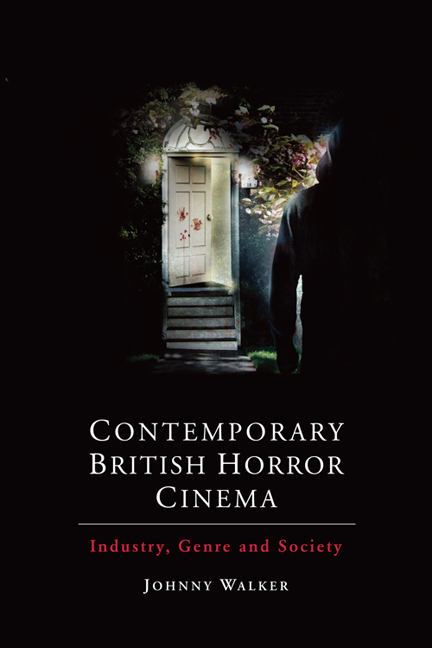3 - Nasty resurrections
Published online by Cambridge University Press: 05 August 2016
Summary
In the previous chapter I acknowledged the various industrial factors that led to, and helped sustain, British horror film production after the year 2000. In this chapter, I want to consider the more immediate cultural antecedents that have influenced the content of recent British horror films before considering a selection of case studies in close detail. What follows is inspired by an early idea of Andrew Higson. In 1989, Higson argued that a ‘national cinema’ is indebted not only to the films made within or by a specific country but also the kinds of films that are especially popular with local audiences. The main example he offered with respect to Britain was Hollywood cinema (Higson 1989: 39; see also Higson 2011: 1). In the 2000s and 2010s, many British horror filmmakers were inspired by non-British films that developed a unique national significance. I am referring, of course, to the films involved in the ‘video nasty’ panic of the 1980s, when it was thought that children may watch violent horror films on video and then re-enact the mostly grisly scenes in the ‘real world’. Fears surrounding this possibility led to the eventual banning of thirty-nine horror/exploitation videos by the Director of Public Prosecutions (DPP) under the Obscene Publications Act 1959 (OPA) and the passing of a new piece of legislation, the Video Recordings Act (VRA), in 1984. The VRA detailed that all films to be released on video had to undergo the same procedure as those films being theatrically distributed, and be certified by the British Board of Film Censors (BBFC). Those films likely to ‘deprave and corrupt’ its audience, as per the OPA, needed to be banned outright, or heavily censored. As Kate Egan (2007) and others have acknowledged, although other countries have experienced similarly turbulent reactions to controversial films, nothing has been quite so centred on home video technology. As such, the films that made the infamous video nasty ‘list’ (in its various incarnations) – despite representing an array of transnational films with their own indigenous preoccupations – constitute a body of films that, in Britain, have been historically and culturally homogenised (Kerekes and Slater 2000; Egan 2007: 128–53).
- Type
- Chapter
- Information
- Contemporary British Horror CinemaIndustry, Genre and Society, pp. 38 - 58Publisher: Edinburgh University PressPrint publication year: 2015



